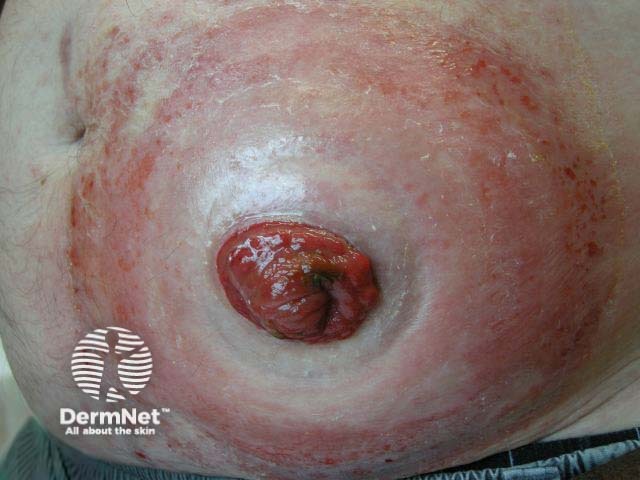Main menu
Common skin conditions

NEWS
Join DermNet PRO
Read more
Quick links
Eczema – 14 cases
Eczema or eczematous dermatitis is an inflammatory response of the epidermis and may be acute, subacute or chronic in nature. Acute dermatitis is characterised by erythema, oedema and blistering – histology reveals spongiosis and inflammatory cells. Chronic dermatitis is characterised by skin thickening and dryness – histology reveals acanthosis and parakeratosis without much inflammation.
Combinations and overlap of different type of eczema are common – for example, lichen simplex may complicate atopic eczema; irritant hand dermatitis predisposes to allergic contact dermatitis; asteatotic and venous eczema may lead to discoid eczema and autosensitisation; and pompholyx may become infected and spread more widely.
General management of eczema should include identifying and minimising causal or aggravating factors, reducing exposure to irritants, liberal use of emollients, and intermittent use of topical steroids of appropriate potency.
- Minimise washing; use soap substitutes
- Apply emollients after bathing and when the skin is dry or itchy
- Use potent topical steroid at first liberally for eczema flare (days to weeks).
For each of the fourteen cases, study the image(s) and then answer the questions. You can click on the image to view a larger version if required.
Each case should take approximately 2 minutes to complete. There is a list of suggested further reading material at the end of the quiz.
Case 6

What kind of eczema does this patient have?
Irritant contact dermatitis (stoma dermatitis)
Describe the features
Irritant contact eczema affects all of us from time to time, and reflects injury to the epidermis by water, detergents, solvents, fibres and friction, acids and alkalis, body fluids, and chemical burns. The injured skin becomes inflamed and attempts repair. Loss of barrier function means the affected skin is prone to further injury. Occupational hand dermatitis is mainly due to irritant dermatitis.
- Mild to severe pruritus
- Rash confined to injured skin
- Dryness (mild) to blisters (severe)
- Pink (mild) to red (severe)
